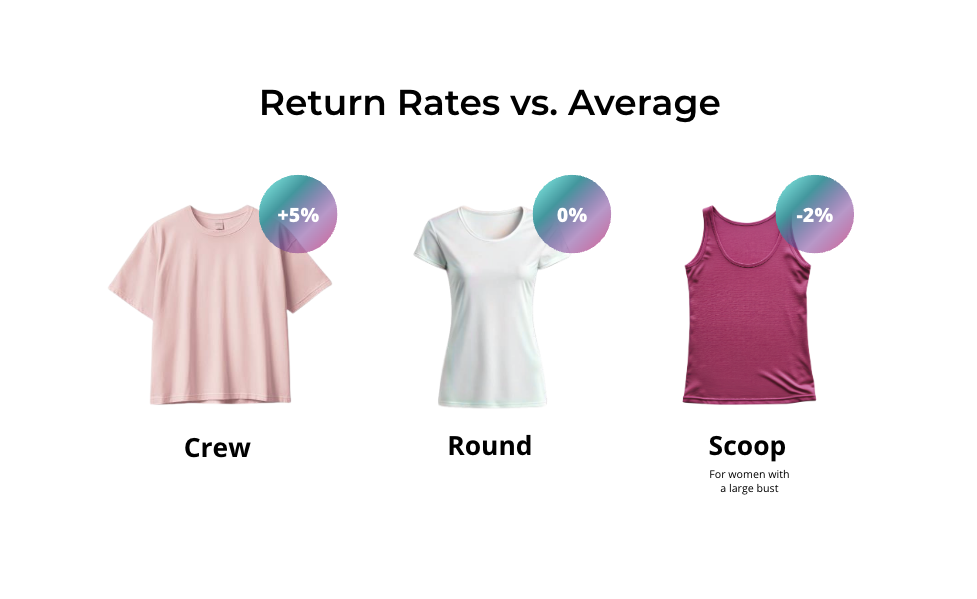What if it was your garment attribute detail that was quietly costing you margin? In fashion, it’s not the obvious choices that hurt profit – it’s the overlooked ones hidden in your product data.

In fashion retail, the devil’s not just in the details – it is the details. When a category is as dynamic and emotionally charged as fashion, integrity in your data structure matters. Inaccurate or missing product attributes don’t just harm personalisation – they quietly chip away at profit.
Take necklines, for example.

We track over two dozen neckline attributes at Mapp Fashion. On the surface, a crew, round, and scoop neck may seem nearly interchangeable. But if you’re selling to women with a larger bust (40% of your audience), that crew neck is 5% more likely to be returned compared to its round or scoop counterparts.
Now, not every product has a neckline, and not every customer has the same fit needs. But for the cohorts where it does matter, this subtle product feature has a measurable impact on returns and that has knock-on effects across demand forecasting, inventory allocation, and customer experience.
Fashion forecasting has long leaned on historical sales and buyer intuition. But true precision comes from a granular understanding of product components.
They may share a price point and product category, but they’ll perform completely differently across regions, body types, and use cases. AI can only recognise and respond to these patterns if the underlying data captures the nuance.
Impact: Retailers that enrich their product data down to the attribute level see up to 8% improvement in margin through better forecasting, fewer stockouts, and smarter reorders.
What changes: Demand forecasts shift from vague estimates to SKU-level confidence scores.
Result: Less fragmentation, fewer stockouts, smarter reorders.
Typical Impact: Retailers see up to 8% margin improvement from reduced overstock and markdowns.
Not all product features carry equal weight. The neckline example is proof. While certain features (like style, fabric, and colour) may influence ad engagement, it’s other attributes – neckline, fit, stretch – that determine how a customer feels in an item. And that, ultimately, dictates what customer will return.
This is the logic behind our Fashion Taxonomy Engine. We enrich product catalogues with features that drive decision-making – not just filtering.

AI is only as good as the data you feed it. Yet most product datasets are built for internal processes (like warehousing), not for fashion customers or the AI tools serving them.
Retailers who reframe their approach – from channel-led to data-led – are pulling ahead.
Here’s what’s possible when your product data starts to speak the language of fashion:
It’s not about having more data. It’s about having the right data – structured in a way that AI can read, and customers can feel. Fashion’s biggest opportunity isn’t more tech – it’s making your tech fluent in fashion. Let’s stop optimising in isolation. Let’s start connecting the dots – from neckline to net margin.

From leveraging AI to enhance personalization to bridging the gap between data and experience, Sarah explains how brands can unlock deeper customer understanding and drive smarter marketing strategies.

We spoke to 30+ fashion retail leaders and the message was clear: the stack is sophisticated, but disconnected. What’s missing? A shared language that connects customer intent to product data.

Spring brings fresh trends and fresh challenges. Short product cycles and high acquisition costs mean fashion brands must move fast. With AI and predictive analytics, you can optimize stock, personalize campaigns, and boost loyalty.